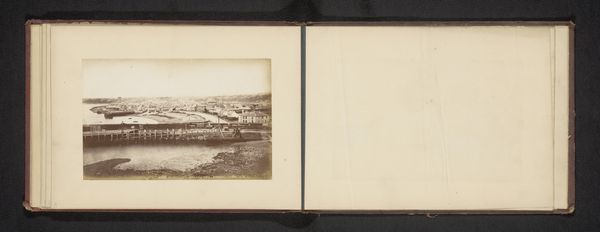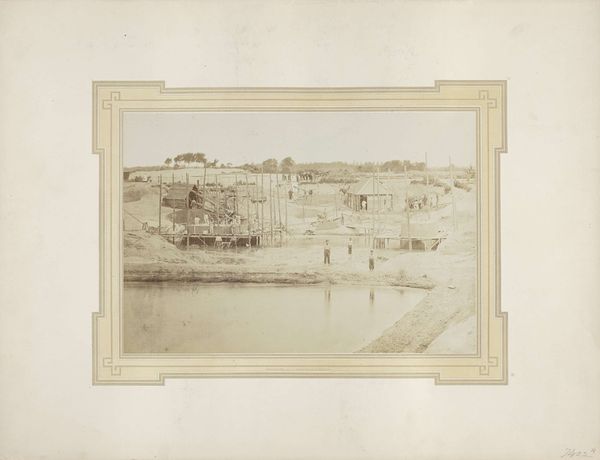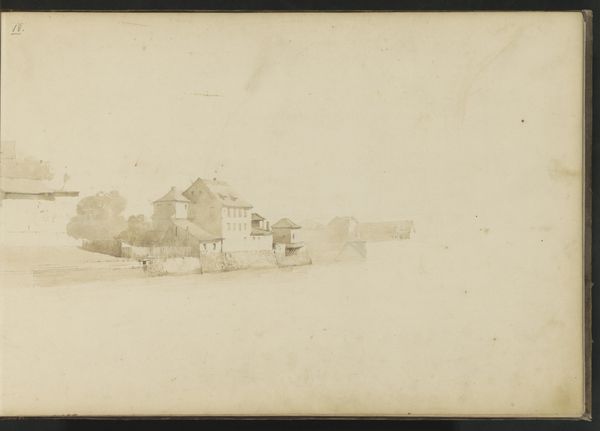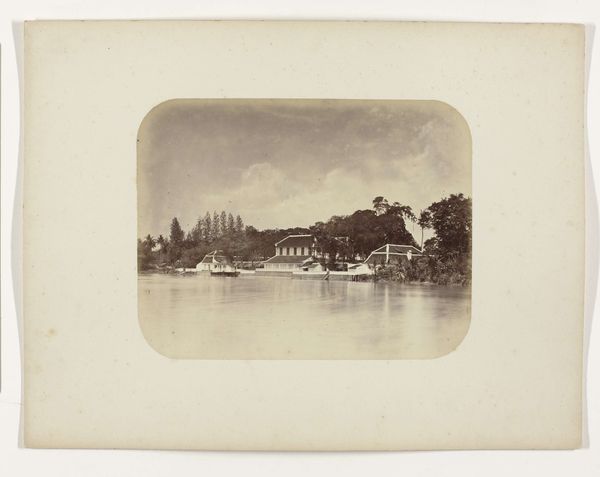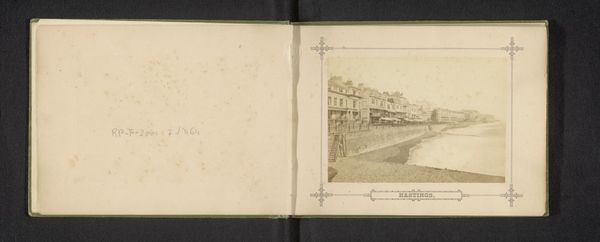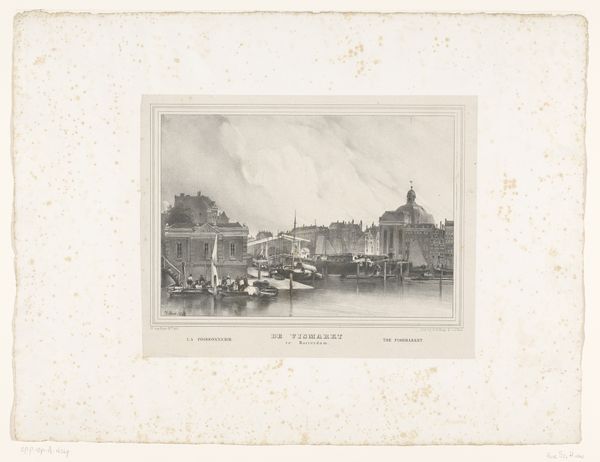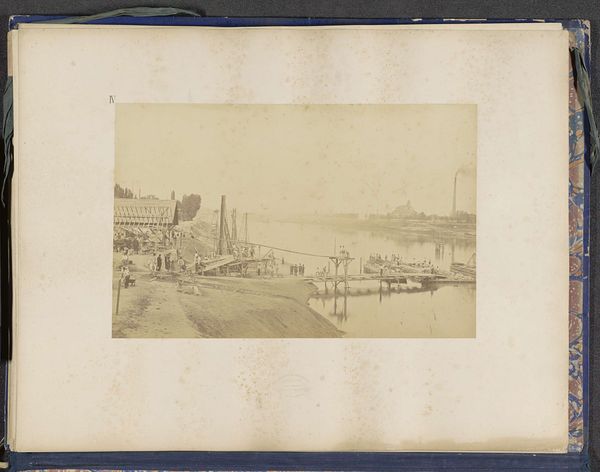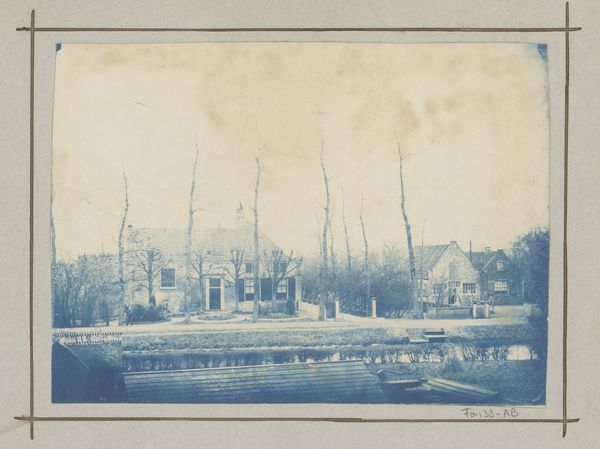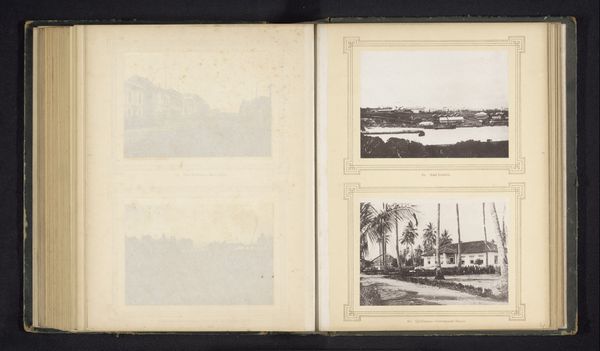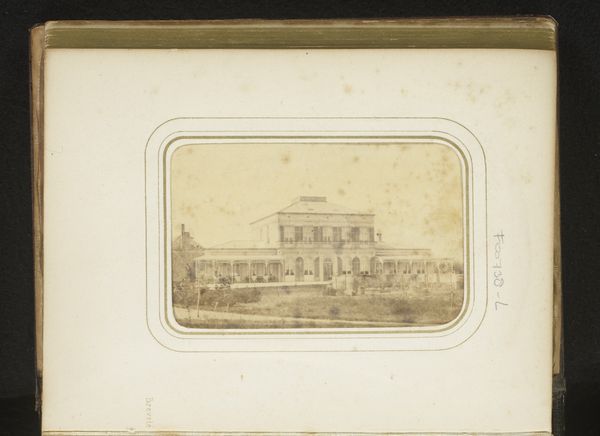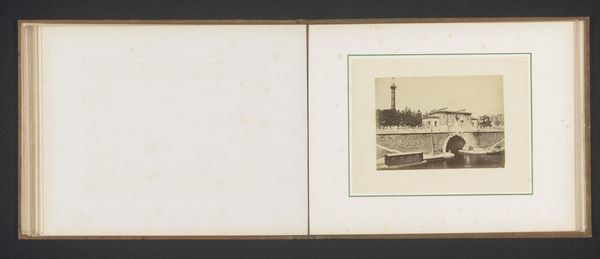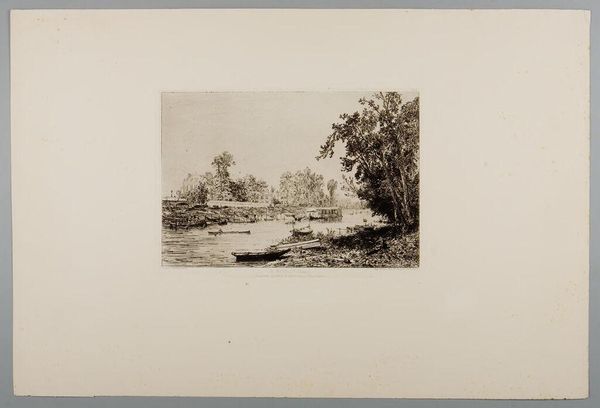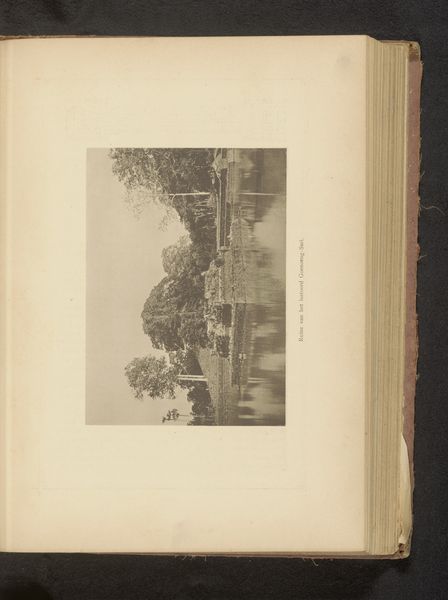
print, photography
#
pictorialism
# print
#
landscape
#
photography
#
cityscape
Dimensions: height 85 mm, width 53 mm
Copyright: Rijks Museum: Open Domain
Editor: Here we have Fr.C. Lachenwitz’s photograph, "View of Cleves, Germany," dating somewhere between 1875 and 1910. There’s a dreamy, almost wistful quality to it. What symbolic weight do you think it carries? Curator: The most striking feature is the steeple. Isn’t it interesting how such a slender vertical thrust becomes a symbol of civic pride, perhaps even spiritual aspiration? It anchors the cityscape to the heavens, signifying stability and permanence in the face of ever-flowing time, represented here by the river. Editor: So, you're saying it projects a sense of enduring presence? The person in the boat feels small in comparison. Curator: Precisely. But don't overlook the symbolism inherent in the water itself. Throughout history, bodies of water often represented the unconscious mind or the passage of time. Here, the boat is navigating both the literal river and, metaphorically, the currents of history. It adds a personal journey within the context of that larger civic identity. Editor: It’s a staged moment captured forever. Did Lachenwitz choose to include a figure on the boat for the viewer? Curator: One must imagine that his decisions reflect what it meant to exist during an early period of industrialization. What better emblem to offer the new viewer? He perhaps included this image to evoke emotion when people began traveling in ways they hadn't been able to for centuries prior. What does this remind you of when seeing it? Editor: This helps me better see the relationship of symbols like architecture to their connection with time. Curator: Absolutely, by understanding how certain images accrue meanings and emotional resonance, we can appreciate the deep currents of cultural memory at play here.
Comments
No comments
Be the first to comment and join the conversation on the ultimate creative platform.
